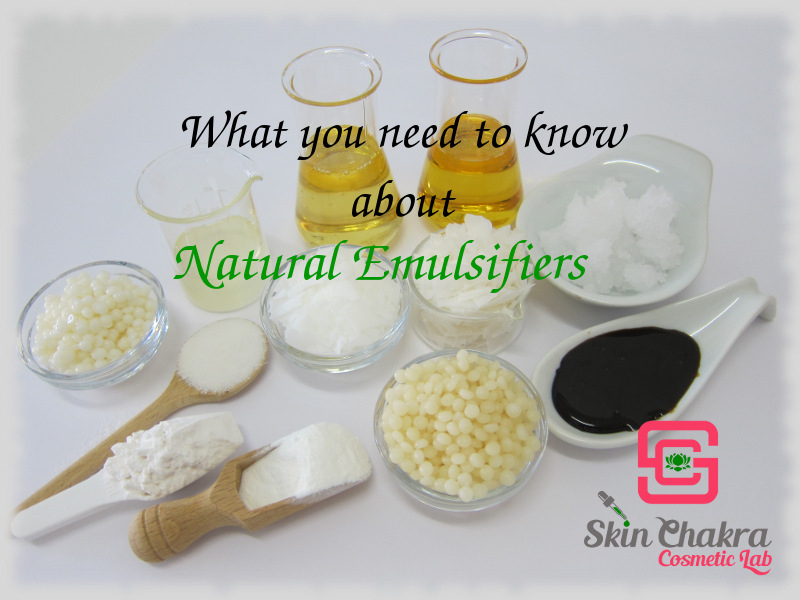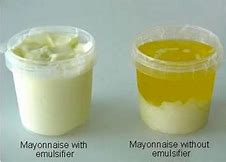How emulsifiers are changing modern culinary innovation
Emulsifiers: Key Active Ingredients for Attaining Completely Blended Formulas
Emulsifiers play an essential function in developing stable blends of immiscible fluids, such as oil and water. Their unique properties enable them to minimize surface area tension, which is important for harmony in numerous formulations. Understanding the differences in between synthetic and natural emulsifiers can influence item top quality substantially. As industries progressively seek to improve appearance and rack life, the selection process for the best emulsifier ends up being extremely important. What factors should be thought about in this important selection?
Recognizing Emulsifiers: What They Are and Just how They Function
Emulsifiers may seem like a simple enhancement to solutions, they play a crucial function in maintaining combinations of components that normally do not blend well, such as oil and water. These compounds function by reducing surface area stress at the interface between immiscible liquids, permitting them to blend more uniformly. Emulsifiers contain both hydrophilic (water-attracting) and lipophilic (oil-attracting) properties, which allow them to secure themselves at the limit of both stages. By doing so, they develop a protective barrier that protects against the beads of one liquid from coalescing right into larger masses, thereby keeping a secure emulsion. The effectiveness of an emulsifier relies on its molecular structure, which influences its capacity to support mixes. In various applications, from food items to cosmetics, emulsifiers ensure a consistent appearance and appearance, enhancing both capability and consumer allure. Their value can not be overstated in attaining well-blended formulas.
Sorts of Emulsifiers: All-natural vs. Synthetic
Emulsifiers can be extensively categorized right into 2 kinds: all-natural and synthetic, each offering distinctive advantages and applications. All-natural emulsifiers, originated from plant or pet sources, include lecithin, periodontal, and casein arabic (emulsifiers). These emulsifiers are typically favored in organic and clean-label products because of their marginal processing and biocompatibility. Their mild nature makes them suitable for sensitive solutions, especially in food and cosmetics

On the other hand, artificial emulsifiers such as mono- and diglycerides, and polysorbates are made through chemical processes. They are frequently made use of in industrial applications because of their stability and effectiveness in developing solutions. Synthetic emulsifiers frequently display premium efficiency in severe conditions, such as heats or varying pH levels. The option in between artificial and all-natural emulsifiers largely depends on the specific solution demands, regulative considerations, and customer choices, influencing their effective application in different markets.
Functions of Emulsifiers in Food and Cosmetic Formulations
The role of emulsifiers prolongs beyond mere stabilization; they are fundamental in accomplishing the preferred structure, appearance, and shelf life of food and cosmetic products. In food formulations, emulsifiers aid mix oil and water, producing uniform and smooth textures vital for sauces, dressings, and dairy items. They lower surface area tension, enhancing the stability of solutions, which protects against splitting up and extends freshness.
In cosmetics, emulsifiers guarantee that active ingredients, such as oils and water, mix flawlessly, supplying a pleasurable feel and improving application. emulsifiers. They add to the item's viscosity and spreadability, essential for lotions, lotions, and creams. Additionally, emulsifiers can envelop active components, improving their circulation and efficiency in formulations. By regulating structure and boosting sensory qualities, emulsifiers visit our website play a vital function in meeting consumer assumptions in both food and cosmetic markets, ensuring products are not just attractive yet also functionally reliable
Choosing the Right Emulsifier for Your Item

Additionally, the target application-- whether for food, cosmetics, or drugs-- will affect the option. Food-grade emulsifiers need to comply with safety and security policies, while aesthetic emulsifiers may need skin compatibility. Evaluating aspects such as HLB (Hydrophilic-Lipophilic Equilibrium) helps in forecasting emulsifier behavior in certain formulations. Eventually, a comprehensive evaluation of both functional demands and governing considerations is essential to choose one of about his the most effective emulsifier, guaranteeing the end product meets the preferred top quality and security criteria.

Tips for Effective Emulsion Development and Stability
Attaining successful solution formation and security requires mindful interest to numerous vital factors. Initially, the choice of emulsifier plays a crucial function; it needs to work with the oil and water stages to guarantee reliable stabilization. Second, the ratio of oil to water must be well balanced, as an inappropriate ratio can result in instability. Third, the blending process needs to be regulated; high shear blending can aid attain smaller bead dimensions, boosting stability.
Temperature likewise affects solution stability; keeping perfect temperatures during formula protects against premature splitting up. In addition, including stabilizers such as thickeners can further improve thickness, reducing the chance of phase separation. Conducting detailed stability tests after solution will aid identify possible concerns, allowing for modifications before last manufacturing. By sticking to these standards, formulators can attain constant and dependable solutions that keep their preferred buildings over time.
Often Asked Inquiries
Can Emulsifiers Be Made Use Of in Vegan Formulations?
Yes, emulsifiers can be made use of in vegan formulas. Several plant-based emulsifiers, such as lecithin from soy or sunflower, offer effective blending without animal-derived components, making them suitable for a range of vegan products.
What Are Typical Allergens in Emulsifiers?
Common allergens in emulsifiers include soy, dairy products, and eggs, as specific emulsifiers are obtained from these resources. Furthermore, some people may respond to additives or chemicals made use of along with emulsifiers in different get more solutions.

How Do Emulsifiers Effect Life Span of Products?
Emulsifiers enhance item stability by avoiding splitting up of components, therefore expanding rack life. They minimize perishing brought on by microbial development and oxidation, resulting in prolonged freshness and improved high quality in numerous food and aesthetic formulations.
Exist Any Type Of Health And Wellness Issues Linked With Emulsifiers?
Study indicates possible health problems related to emulsifiers, including gut microbiome changes and inflammation. While regulatory bodies generally consider them secure, ongoing researches remain to check out long-lasting impacts on health and general well-being.
Can Emulsifiers Improve Taste or Aroma in Formulations?
Emulsifiers can enhance flavor and aroma in formulas by improving component diffusion and stability. This leads to a more consistent item, permitting flavors to combine effectively, ultimately leading to an extra satisfying sensory experience for consumers.
Emulsifiers might appear like an easy enhancement to solutions, they play an essential role in maintaining combinations of active ingredients that normally do not mix well, such as oil and water. In food formulas, emulsifiers assist mix oil and water, developing consistent and smooth appearances necessary for sauces, dressings, and milk items. Food-grade emulsifiers should abide with safety guidelines, while cosmetic emulsifiers might require skin compatibility. Common allergens in emulsifiers include soy, dairy products, and eggs, as certain emulsifiers are obtained from these sources. Emulsifiers can enhance flavor and fragrance in solutions by improving ingredient dispersion and stability.